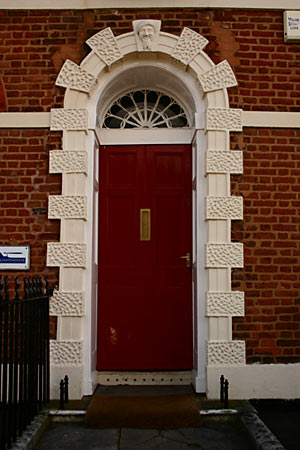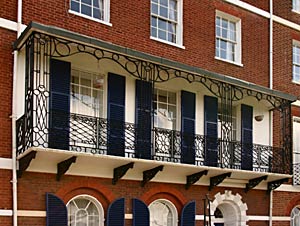
Exeter Stories
Exeter folk and friends in their own words - 1890's to the 1990's │ << Previous story │ Next story >> │
David Cornforth - retired resident of Exeter
"When I moved to Devon in 1974, I managed to obtain a job as a computer programmer with an Exeter company called Western Data Processing in Colleton Crescent.
The company provided payroll, stock keeping and accounts data processing for local businesses that could not justify the cost and upkeep of the large mainframe computers that were then being used. I can remember working on the Kneels Drycleaning account, developing an accountancy system. This was time-consuming and boring work. Hours were spent writing Cobol code onto pre-printed sheets which were then sent downstairs to the punchcard girls. The completed cards were then sent to the computer room for a test run, over night. I often turned up for work the next morning to find that a single letter or number was wrong and the whole thing refused to run.
However, time was found to produce a 'computer' picture of the Kneel's penguin by a rather bored colleague. This was in the days when printers only produced numbers and letters, like a typewriter. Kneel as a name no longer exists in Exeter, although there is still a drycleaning business on their premises, at Cowley Bridge Road.
Colleton Crescent is considered one of Exeters architectural jewels. Western Data Processing was located at no 7. The large blue (they were all blue then) ICL 1902A computer, covered with flashing lights and large dials, occupied a groundfloor room complete with airconditioning and attendant computer operators. The punchcard girls worked on the first floor and I worked on the top floor of the house, enjoying the view across the river towards the Haldon Ridge. I well remember finding that my mind wandered from the coding as I looked up and counted the coaches on the many holiday special trains speeding down towards Torquay and Cornwall. I think the record was 14. Maybe that accounted for my coding errors!
The punchcard girls tapped away at their machines, punching holes into the cards which were then read by a huge and noisy card-reader. Buckets of 'chads' (yes, the very same that caused all the election trouble for the USA in 2000) were produced, in a rainbow of colours. A fellow programmer was going to use them as confetti at a wedding, until it was pointed out that they were quite sharp and dusty.
This must have been a year or two after they had filmed many of the quayside scenes for the Onedin Line. Not only did the quay represent 19th century Liverpool but Colleton Crescent was used in the filming with hansom cabs drawing up and a crinoline dressed Jane Seymour alighting and entering one of the houses.
Colleton Crescent was built in 1814 by Matthew Nosworthy. The crescent is named after John Colleton who introduced, in 1737, a species of magnolia to England from Carolina. Some of the detailing on the exterior of the houses is made of coade stone, invented by Eleanor Coade, a wealthy resident of Exeter."

 Number 7, former home of Western Data processing
Number 7, former home of Western Data processing A balcony at Colleton Crescent
A balcony at Colleton Crescent
│ Top of Page │